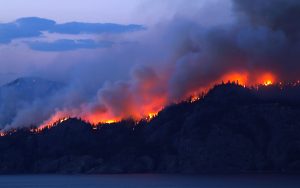In much of Virginia outdoor air quality is low due to smoke particles from wildfires in Canada being brought in by the wind, reaching as far south as North Carolina. A large landfill fire in Fairfax County on June 6 also contributed to air quality declines in that area, with smoke widespread over I-95. The primary components of the smoke haze are tiny particles called PM2.5, which are less than 2.5 micrometers across. These are small enough to be breathed deep into the lungs, and even be absorbed into the blood. These can cause breathing problems for people with asthma or other lung diseases, and can raise blood pressure. In some cases breathing air with high levels of PM 2.5 can cause irregular heartbeat or even heart attacks. You can check your local air quality and get information about air quality and health at AirNow. See the AirNow Guide for Particle Pollution for steps to take when air quality is low.
Children, older adults, and people with chronic diseases like chronic obstructive pulmonary disease (COPD), asthma, and heart disease are more sensitive and should be especially careful. When air quality is low, try to spend less time outdoors, don’t exercise strenuously, and take breaks during outdoor activity. If you notice eye or lung irritation, go indoors. You can help protect yourself by wearing an N95 respirator while you are outside.
While indoors, keep doors and windows closed to keep outside air from coming in. You can run your HVAC fan to recirculate air through the HVAC filter and help to remove particles. If you have a room HEPA filter, these are very effective at cleaning room air. Filters with ozonizers or ionizers are not necessary, since these can generate chemicals that can irritate your lungs and eyes.
Visit our Smoke Exposure factsheet for more information on how to protect yourself from smoke in outdoors air.

